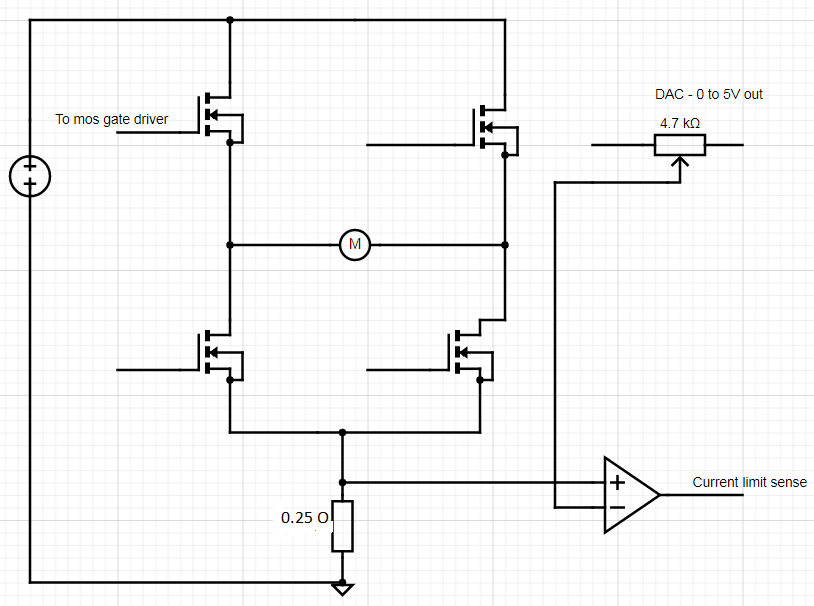Are there any disadvantages in measuring H Bridge current only via 1 shunt resistor? Since it will be made by hand on a perf board the only disadvantage will be the possible longer wires that connect both drains of the lower N FET half bridges to the shunt resistor.
Mosfet driver will be ir2110/13 but that is a discussion for another post :) . I read application note from infineon and saw that there is a reverse current flow and ground going "below ground".
If I'm correct, current from forward biasing a diode when the bridge fets are HiZ will flow from ground to VCC and it will affect both configurations.
Output from the comparator/ OR gate goes into the classic Threshold reached -> shut off the bridge controller.
Yes, the sense resistors are huge but I don't care about the wasted power, resolution is of greater importance from DAC. And I forgot to put the ballast capacitor from VCC to Ground. Current of the bridge will max out at about 5 Amps.


